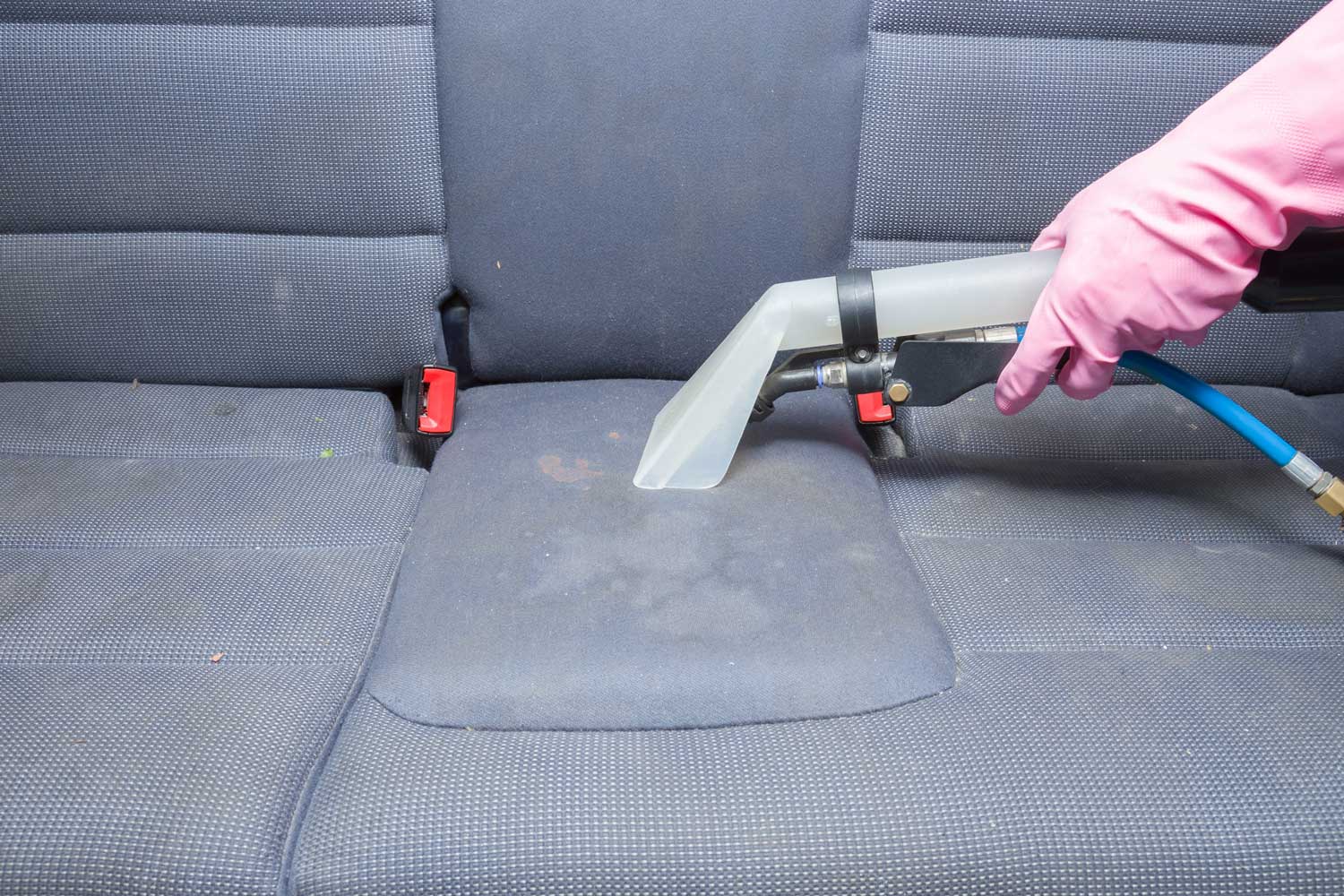How to Remove Stains from Your Car's Upholstery
Whether dealing with a vehicle’s cloth or leather upholstery, traditional cleaning products and elbow grease are often the right answer.
 Getty Images
Getty Images
The longer a stain sits on a vehicle's upholstery, the harder it can be to remove. If you can't get at a stain immediately or only notice it well after the fact, don't worry. There are several steps you can take to return your vehicle's cloth or leather seats to like-new condition. All you need are the right products, patience, and a few basic instructions, and you won't have to look at that blemish again.
The Best Products for Removing Stains
Some of the same techniques used to remove stains from clothing and furniture also apply to cloth car seats and carpets. The standard array of tools—club soda, baking soda, and vinegar—can also be used on cloth and vinyl car upholstery. Laundry detergent, stain sticks, and spray-on stain remover are also safe, which means you can even take care of smaller stains with something like a Tide To Go pen applicator. Auto-specific cleaners are, of course, available, and they may work better on some upholstery types. For more persistent stains, a steam cleaner is also a good option, but this can be on the more expensive side (and is usually used by professional detailers).
Leather car upholstery requires a more specialized set of products. Detailing brands like Turtle Wax produce deep-cleaning products designed to lift out stains from leather without damaging dyes or drying the upholstery. A steam cleaner is a definite no, as leather is much more sensitive to heat and moisture than cloth upholstery is.
How to Remove Stains from Car Upholstery
Removing stains from cloth car upholstery requires you to give your cleaner enough time to lift the grime from the material. This means applying the stain remover to a cloth or bristle brush, working it into the stain, and then letting it sit. Don't apply so much that the seat becomes soaked, and make sure to test the product you are using on a hard-to-see area first to make sure it doesn't discolor. Remove the cleaning product with a cloth after letting it sit for the recommended time. You might have to repeat this process several times before the stain is gone, or alternate between using a cleaning product and a steam cleaner.
Leather follows the same general process, minus the steam cleaner. Work the product into the stain with a cloth or a toothbrush (gently, to prevent scratching), let it sit, then wipe it clean. Be mindful not to use too much cleaner in one spot (as you might remove dye or dry out that area of the upholstery), and always blot it dry. If you still see some tarnished areas on the upholstery after the first pass, you can apply a second time with the towel and then use a soft bristle brush or sponge (included in some kits) to apply more pressure. Wipe away any leftover cleaner when you're done.
Protect Your Work
There are products you can apply to cloth car seats to create a better barrier against future stains — major brands like Scotchguard produce automotive-specific formulations. High-end ceramic coatings are also available.
Any deep-cleaning of leather upholstery should be followed by a conditioner, which helps restore the natural moisture of the material and protects it from cracking over the longer term.
Written by humans.
Edited by humans.
 Benjamin Hunting
Benjamin HuntingBenjamin Hunting is a writer and podcast host who contributes to a number of newspapers, automotive magazines, and online publications. More than a decade into his career, he enjoys keeping the shiny side up during track days and always has one too many classic vehicle projects partially disassembled in his garage at any given time. Remember, if it's not leaking, it's probably empty.
Related articles
View more related articles